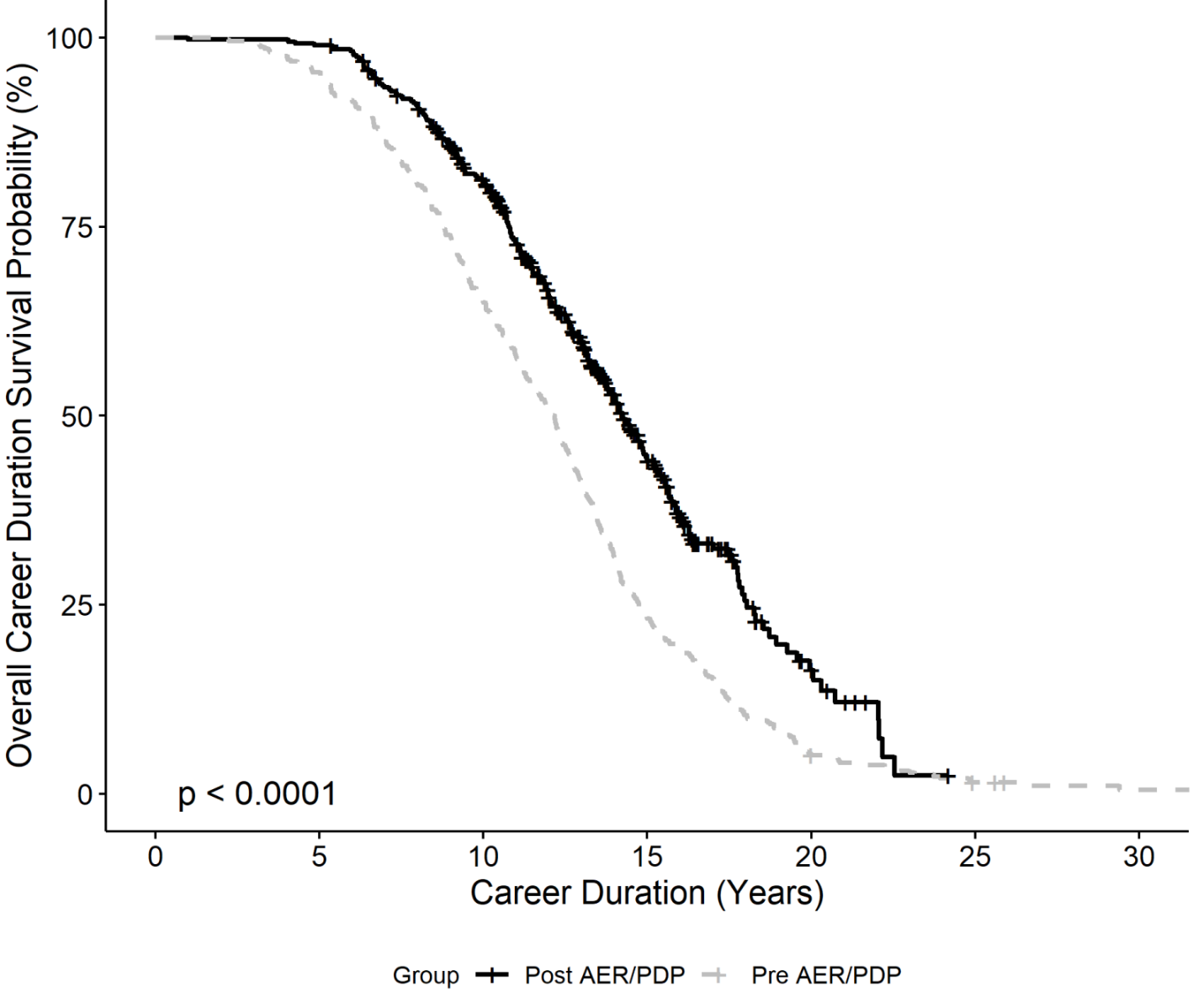This blog summarizes the recently published BJSM article about the Women’s Tennis Association (WTA) policy, implemented in 1995, that intentionally combined an Age Eligibility Rule (AER) and mandatory Player Development Programs (PDP) focused on organizational, physical and psychosocial education, skill building, and support for adolescent athletes (≤17 years).
This study was led by a Player Development Advisory Panel of voluntary and independent sports science and medicine experts and used 25 years of data to assess differences in career longevity for professional women tennis athletes who played their first professional event prior to their 18 th birthday before and after the 1995 combined AER/PDP policy change.
Why is this study important?
Adolescent elite athletes are exposed to unique stressors that put them at physical, emotional and psychosocial risk. Women’s professional tennis is a potentially lucrative sport, with a history of adolescent phenoms competing. Concerns about premature sport retirement of adolescent athletes due to burnout and injury led the WTA to adopt a combined strategy of education and regulation for supporting the physical, emotional, psychosocial and developmental well-being of players in 1995. This programming has evolved over many years and currently encompasses organisational, physical and psychosocial education and safety support and monitoring for adolescent athletes, and training and code of ethics guidelines for their player support teams (eg, parents, agents and coaches). The findings of this study can provide insight into actionable steps that can be taken to enhance athlete well-being and guide other organizations on possible research and policy for consideration.
How did the study go about this?
25 years of WTA data was analysed to assess whether the WTA’s combined AER/PDP approach of regulation and education would address known adolescent stressors and risks and ultimately have an impact on career longevity, a potential marker for well-being. Included in this study were a total of 811 athletes who played their first professional event at ≤17 years and earned a Top 150 Singles WTA Ranking at any point of their career. 414 (51%) players were classified in the pre AER/PDP group and 397 (49%) were classified in the post AER/PDP group.
What did the study find?

All three markers of career longevity in professional tennis – median career duration; probability of 10 years and 15 years career durations; and premature retirement rates – were significantly better for the cohort of top ranked adolescent players who began
playing after the WTA implemented the combined AER/PDP policy in 1995, providing evidence of the potential effectiveness of this approach. Importantly, other factors such as improved medical care, changes in training patterns, and increases in prize money may also have played a role in better career longevity, but were unable to be assessed as part of this study.
What are the key take-home points?
Sports organizations should consider multi-level interventions aimed toward adolescent players and key stakeholders inclusive of organizational policy (i.e., age regulations, physical and psychosocial health screening, and educational initiatives that address identified athlete stressors (e.g., managing self-expectations, finance, competition and media). A systematic and longitudinalapproach to measuring the impact of organizational interventions on elite athlete wellbeing (or proxies for wellbeing, such as career longevity) can lead to ongoing and iterative clinical practice improvements.